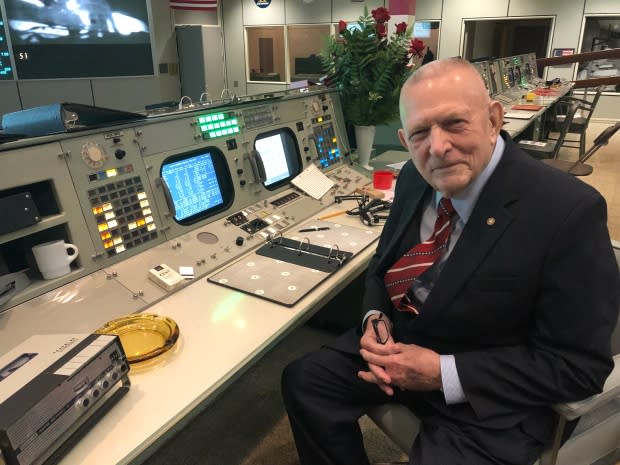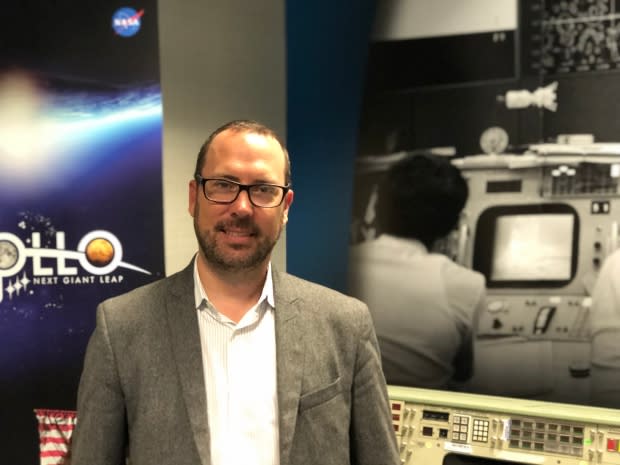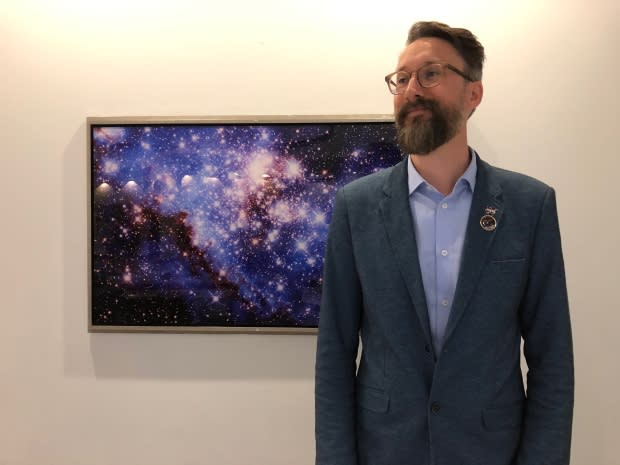'Eureka': Canadian helps restore audio from Apollo 11 mission control

This story is part of Moon Landing: 50th Anniversary, a series from CBC News examining how far we've come since the first humans landed on the moon.
Neil Armstrong.
Buzz Aldrin.
The names of the first men to walk on the moon are legend now. They're central characters in a feat that once seemed unimaginable. But that giant leap wouldn't have happened without support from the crew at mission control, who made sure the Apollo 11 team came back home safely.
They're the crackling voices you hear on the archive tapes, instructing Apollo, "Go for flight."
But both the mission control room itself and recordings of the voices were almost lost, until a NASA legend and a Canadian software engineer intervened.
The man who said 'failure is not an option'
Gene Kranz is the flight director who was on duty that day in July 1969 when they first heard the words, "The Eagle has landed."
With his booming voice and military-style brush cut, Kranz set the standard for professionalism at mission control.
For years now, Kranz has been waging a new battle.
For the Gemini and Apollo flights and into the space shuttle era, the Mission Control Center (or MCC) was in Building 30 of the Johnson Space Center in Houston.

When NASA relocated MCC to a modern facility in 1992, the room fell into disrepair. Visitors began nicking button panels; Kranz found himself picking up garbage before giving VIPs a tour. It was a sad state of affairs for place where history was made.
Speaking at an event at the Houston space centre, Kranz talked about what made the room special. "It's no ordinary place. This is where decisions are made. The words are crisp, concise, urgent. This is our home. This is our mission control. It's a battleground of the space race."
The battle to restore the room
Kranz said the battleground had seen better days. "This yellow duct tape that was holding our carpeting together [and] the configuration of the consoles in no way represented the tools we had at hand when we were flying Apollo."
So the flight director famous for stating "failure is not an option" began a campaign to restore the room to its former glory.
Watch: Have a peek inside restored mission control
The goal: create a living museum where tourists could experience some of Apollo 11's most dramatic moments.
But when it came to a plan to use the voices of mission control to tell that story, Houston had a problem.
A muffled-sounding mess
All the voices in the room were recorded on two 30-track, one inch tapes.
For years, the tapes had been languishing in cold storage. Once they were rediscovered and digitized, the audio was a muddy, muffled-sounding mess, making it impossible for historians to synchronize the events of mission control.

But one man made it his mission to restore the voices of mission control — Toronto software engineer, Ben Feist.
Feist is what you might call a space geek. During the day, he worked for an ad agency. In his spare time, he created websites where visitors could relive the moon mission in real time.
For Apollo 11, Feist planned his most ambitious site yet. When he learned about the tapes from mission control, he knew he had found the motherlode.
'I can't believe I've cracked it'
Feist wasn't an audio expert, but he was an expert in solving problems. Fortunately, the tapes had already been digitized by a team of sound engineers from the University of Texas at Dallas.
After studying the audio, he discovered an underlying signal track of one kilohertz. By matching the audio to the tone, he was able to adjust the voices to create a consistent and clear record of what was said. Feist then wrote a program applying that to all 11,000 hours.
"The fact that it worked was just this eureka moment. I was just, oh my God, I can't believe I've cracked it."
Not only had Feist brought the voices of mission control back to life, but working with archivist Stephen Slater, they were able to synch the audio with recently uncovered footage of the Apollo mission, now featured in the documentary Apollo 11.
Watch the trailer to the Apollo 11 documentary below:
Everyday heroes
Listening to the newly recovered voices, what struck Feist was the everyday nature of the crew.
"They're just normal people doing a job. They're young. The average age was 26 years old. They're professional, but they're also complaining about how much overtime they're working and calling home and saying, 'Sorry I'm late.'"
As is often the case with historical preservation, according to Feist, legends begin to overshadow the reality. The crew that helped Apollo 11 land on the moon weren't superhuman, they were just prepared, he said.
Perhaps that's why after studying and syncing the audio, Feist's favourite moments are the human ones.
One recording comes from the recovery team whose job it was to retrieve the astronauts after they splashed down in the Pacific Ocean. Hours before the rocket launch, the importance of the big day was undeniable, as team members joked: "Nobody can get sick, no one can die."
On another occasion, the same team decided to prank a colleague named Robert by telling him that he overslept and missed the launch.
The pranksters tell Robert to rush into work saying, "Don't shave, or have breakfast either."
For Feist, the reward was using the voices as the backbone for his new Apollo 11 website, launched in time for the 50th anniversary celebration. What he didn't realize is by finding a user-friendly way to display complex systems of data, Feist had unwittingly solved a problem NASA had been struggling with.
Hired by NASA
When Feist visited Houston for a presentation about his previous website, Apollo 17, NASA made him an offer.
He remembers the moment when a NASA representative said, "It would be easier if you just worked here."
Which is how Ben Feist, now a NASA employee, found himself standing on the floor of mission control, in a special unveiling for friends and family. Historians painstakingly recovered or recreated everything from the computer consoles to their favourite coffee cups.
Historic room restored
CBC News was there as Feist and the rest of the restoration staff were given the first private tour of the restored mission control. Visitors will watch from the same viewing lounge that the families of the astronauts sat in, overlooking the room.
As the audio plays from speakers above, you hear Neil Armstrong's calm voice announce, "The Eagle has landed."
It's followed by a rare moment of emotion for mission control, "You got a bunch of guys who are about to turn blue. We're breathing again. Thanks a lot."
After years studying the transmissions, Feist still feels something special, standing in the spot where flight director Gene Kranz commanded the crew,
"It was us at our very best, doing something that was extremely difficult. Those people ... might be personally flawed but they were perfect in that moment."
Mission control is now open to the public. As the lights go down, the original computer consoles light up. Then the voices of mission control take tourists through highlights of the moon landing, the first steps and the phone call from U.S. President Richard Nixon.

For the large monitors that display the lunar surface which at the front of the room, Feist recruited another Canadian, a colleague from his ad agency days, multimedia producer Tyler Strahl.
After meticulously studying archive footage, Strahl recreated the iconic lunar maps and clocks that mission control staff spent hours staring at. Now Apollo alumni are asking for copies of his illustrations.
"People get emotional," said Strahl. "That's pretty wonderful for me to have given them that sort of experience and recreate that memory for them."
Next steps for NASA
With history safely preserved, NASA is now focused on the future, looking to land the first woman on the moon by 2024.
The ambitious plan includes an orbiting lunar platform and robotic support from Canada and a coalition of countries.

As an employee of NASA, Feist will be designing systems to share it all with the world. He said one of the legacies of the moon mission was the "Apollo moment" that inspired a new generation to look to the stars.
Feist hopes his next web sites will inspire a new wave of explorers.
"If I have my way, the eight year old at home watching the next moon mission will be using the same system that mission control uses to manage that same mission - with full openness of all the channels of data and video and as a new way to capture the imagination of kids."

With files from Alice Hopton


